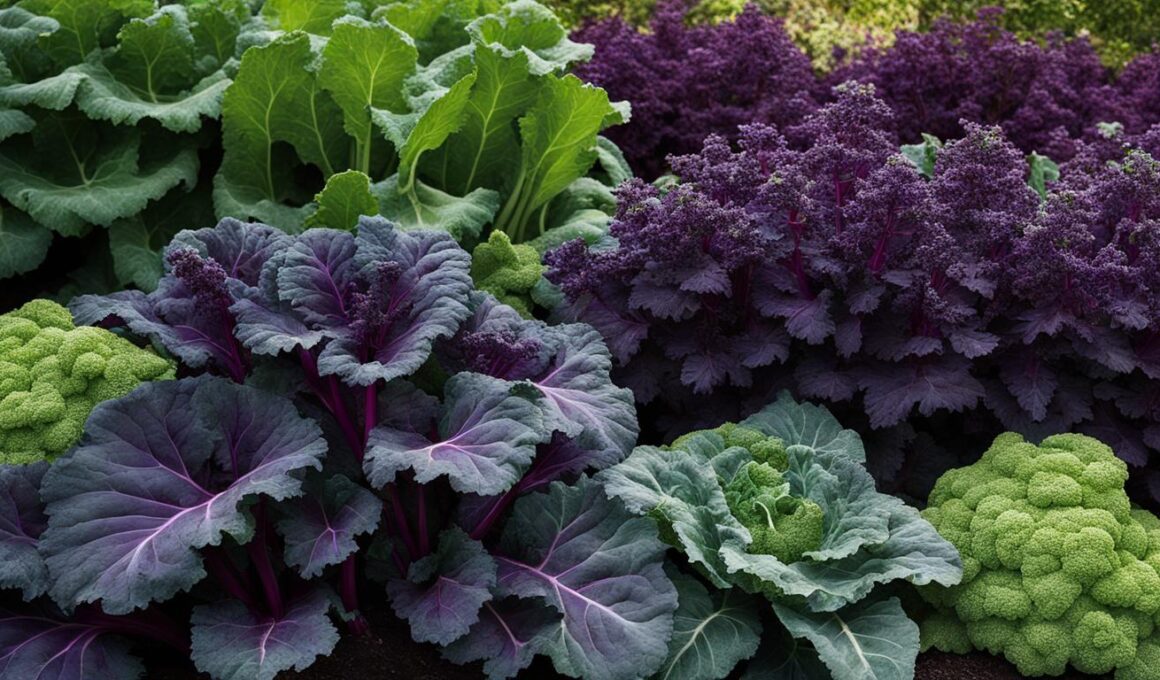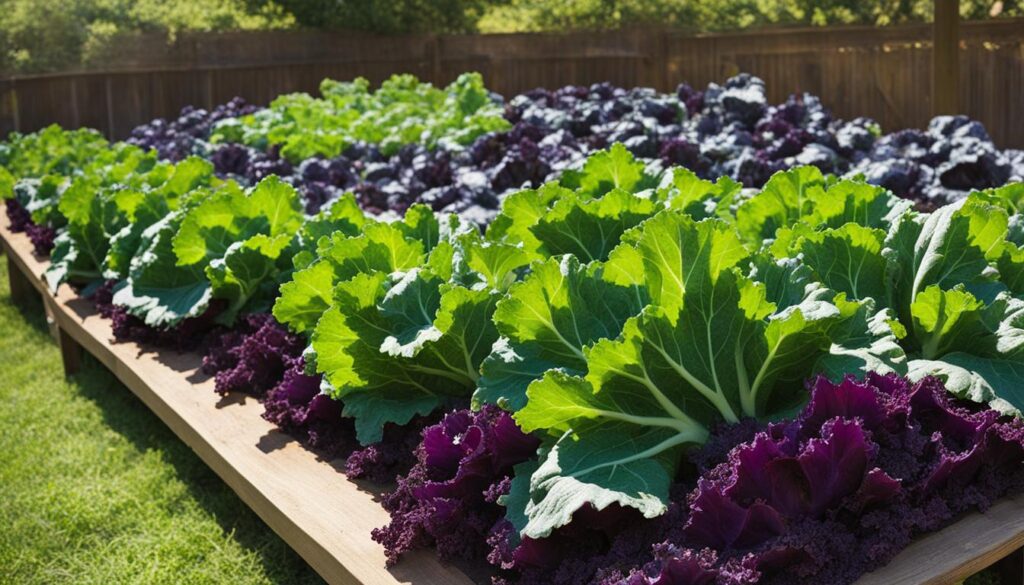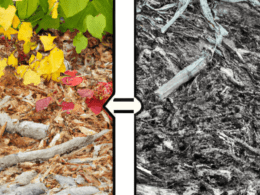Companion planting is a gardening technique that involves growing two or more different types of plants together to benefit from each other. When it comes to growing kale and eggplant together, there are several benefits. Kale is a fast-growing vegetable that can provide shade for the slower-growing eggplant and protect it from the hot summer sun. Kale and eggplant are both resistant to many pests and diseases, so they can help protect each other. Additionally, growing these vegetables together can improve their flavor. To successfully grow kale and eggplant together, you’ll need to consider their different growing habits and maturity dates.
Post Summary:- Companion planting is a gardening technique that can increase yields and improve pest and disease control.
- Growing kale and eggplant together can provide shade, protect against pests, and enhance flavor.
- Consider the different growing habits and maturity dates when planting kale and eggplant together.
- Choose compatible companion plants that have similar growing requirements.
- Regular care and maintenance, including proper watering and timely harvest, are essential for success.
The Benefits of Companion Planting Kale and Eggplant
Kale and eggplant are two versatile vegetables that can be grown together in the garden. When grown together, kale can provide shade for eggplant, protecting it from the hot summer sun. Both vegetables are resistant to many pests and diseases, so they can help protect each other. Additionally, growing kale and eggplant together can improve the flavor of both vegetables. By planting them together, you can enjoy a bountiful harvest of fresh and flavorful produce.
“Companion planting kale and eggplant together is a great way to enhance the growth and productivity of both vegetables. The shade provided by the kale helps to keep the eggplant cool during the summer heat, preventing it from becoming stressed and wilted. This shade also helps to conserve soil moisture, reducing the need for frequent watering. The pest and disease resistance of both plants mean that fewer pesticides and fungicides are needed, making this an environmentally friendly gardening method.”
Did you know? Companion planting can also improve the overall health of your garden by attracting beneficial insects and improving soil fertility. It’s a win-win situation for both your plants and the environment.
Enhancing Flavor with Companion Planting
One of the biggest benefits of growing kale and eggplant together is the improved flavor that can result from this companion planting method. The close proximity of the two vegetables can lead to increased interaction between their roots, which can enhance the absorption of nutrients and flavors. As a result, both kale and eggplant can develop a richer, more vibrant taste.
Not only does companion planting improve the flavor of these versatile vegetables, but it also provides an opportunity to experiment and create unique culinary combinations in your kitchen. Imagine the possibilities of incorporating the earthy bitterness of kale with the creamy, slightly sweet flavor of eggplant in your favorite dishes!
| Kale | Eggplant |
|---|---|
| Rich in vitamins A, C, and K | Good source of dietary fiber and potassium |
| Requires regular watering and well-drained soil | Tolerates dry conditions but benefits from consistent moisture |
| Cool-weather crop, best grown in spring or fall | Warm-season crop, thrives in summer temperatures |
| Harvest the outer leaves as needed for continuous growth | Harvest when mature and shiny |
How to Grow Kale and Eggplant Together
When it comes to growing kale and eggplant together, there are a few key factors to consider. To ensure successful growth, you’ll need to pay attention to the amount of sunlight they receive, the quality of the soil, the timing of planting, pest control, and the harvesting process.
1. Sunlight and Soil
Kale and eggplant thrive in full sun, so it’s crucial to choose a location in your garden that receives at least 6-8 hours of direct sunlight each day. This will ensure optimal growth and maximize your vegetable harvest. Additionally, both plants require well-drained soil to prevent waterlogged roots, which can lead to diseases and poor development. Prepare the soil by adding organic matter to improve its fertility and drainage.
2. Timing
Timing is essential when planting kale and eggplant together. Kale is a cool-weather crop that thrives in spring and fall, while eggplant prefers warmer temperatures. To avoid competing for resources and space, it’s best to start kale early in the season and then introduce the eggplant once the kale has established. This will prevent the kale from bolting before the eggplant has had a chance to grow.
3. Pest Control
Pest control is a critical aspect of growing kale and eggplant together. While both vegetables are relatively resistant to pests, it’s important to monitor your plants regularly for any signs of infestation. Implementing organic pest control methods such as handpicking insects or using natural pest deterrents can help maintain the health and vitality of your crops.
4. Harvesting
Harvesting your kale and eggplant at the right time is crucial for optimal flavor and texture. Kale leaves can be harvested throughout the growing season, starting with the outer leaves and leaving the inner ones to continue growing. Eggplants, on the other hand, should be harvested when they reach a mature size and have a glossy appearance. Regularly harvesting your vegetables will encourage continuous growth and ensure a bountiful harvest throughout the season.
By following these guidelines and providing the necessary care, you can successfully grow kale and eggplant together in your garden. Enjoy the rewards of these delicious and nutritious vegetables, and experiment with different companion planting combinations to maximize your garden’s productivity.
| Considerations | Kale | Eggplant |
|---|---|---|
| Sunlight | Requires 6-8 hours of direct sunlight | Requires 6-8 hours of direct sunlight |
| Soil | Well-drained soil | Well-drained soil |
| Timing | Start early in the season (spring or fall) | Introduce once kale has established |
| Pest Control | Relatively resistant to pests | Relatively resistant to pests |
| Harvesting | Continuous harvesting of outer leaves | Harvest when mature and glossy |
Examples of Other Plants that Can Be Grown Together
In addition to growing kale and eggplant together, there are several other plants that make excellent companions in the garden. These companion plants can provide various benefits such as pest control, improved flavor, and enhanced growth. Here are some examples:
Kale and Radishes
Growing kale and radishes together can be a beneficial combination. Radishes help deter pests that commonly affect kale, such as aphids, cabbage worms, and flea beetles. Planting radishes alongside kale not only acts as a natural pest deterrent but also maximizes the use of space in your garden.
Eggplant and Tomatoes
Eggplant and tomatoes are compatible companions in the garden. They both prefer similar growing conditions, including full sun and well-drained soil. By planting these two vegetables together, you can optimize space utilization and enhance pest management. Since eggplants and tomatoes share many common pests, the presence of one can help protect the other.
Kale and Beans
Kale and beans can be grown together as they have a symbiotic relationship. Beans, including bush beans and pole beans, can provide nitrogen to the soil, which promotes healthy leaf growth in kale. In return, kale’s dense foliage can provide shade and help retain moisture for the beans. This companion planting combination is both beneficial for the plants and space-efficient in the garden.
Eggplant and Peppers
Eggplant and peppers make a great pairing in the garden. They share similar growing requirements, including full sun and fertile soil. Growing these two plants together can help maximize garden productivity and space utilization. Additionally, eggplant and peppers can provide shade for each other during hot summer days, which can help prevent sunscald and promote optimal growth.
| Companion Plants | Benefits |
|---|---|
| Kale and Radishes | Pest control, space optimization |
| Eggplant and Tomatoes | Pest control, similar growing conditions |
| Kale and Beans | Nitrogen fixation, shade provision |
| Eggplant and Peppers | Space optimization, shade provision |
These are just a few examples of the many companion planting options available. When deciding which plants to grow together, consider their compatibility, similar growing requirements, and the benefits they can provide to each other. By strategically planning your garden and implementing companion planting techniques, you can create a thriving and productive ecosystem.
Is it Possible to Grow Cauliflower and Chard Together Like Kale and Eggplant?
When it comes to growing cauliflower and chard together, it is indeed possible, much like pairing kale and eggplant. These plants thrive in similar growing conditions, making them suitable companions in your garden. By allocating enough space, providing adequate nutrients, and maintaining proper care, you can cultivate a diverse and nutritious harvest of cauliflower, chard, kale, and eggplant all in one place.
Conclusion
Successfully companion planting kale and eggplant together can maximize your garden’s productivity and yield a bountiful harvest. By considering the specific needs of each plant and selecting compatible companions, you can create a thriving ecosystem in your garden.
To grow kale and eggplant together effectively, it is important to choose plants that have similar growing requirements. This includes ensuring they receive the right amount of sunlight and are planted in well-drained soil. By meeting their individual needs, you can create an environment where both kale and eggplant can flourish.
Choosing compatible companions is another crucial factor in successful companion planting. Look for plants that can provide benefits to each other, such as shade from taller plants or pest control. This synergy can help both kale and eggplant thrive and maximize the productivity of your garden.
In summary, to achieve successful companion planting with kale and eggplant, it is essential to understand and consider the needs of each plant, choose compatible companions, and provide proper care and maintenance. By following these guidelines, you can create an optimal environment for your plants to grow, enhance your garden’s productivity, and enjoy a diverse and flavorful harvest.
FAQ
What is companion planting?
Companion planting is a gardening technique that involves growing two or more different types of plants together to benefit from each other.
Why should I grow kale and eggplant together?
Growing kale and eggplant together can provide benefits such as shade for eggplant, pest and disease resistance, and improved flavor for both vegetables.
What are the key considerations when growing kale and eggplant together?
Key considerations include planting in a location with full sun and well-drained soil, timing the planting correctly, implementing proper pest control, and ensuring timely harvest.
What are some other plants that can be grown together with kale and eggplant?
Some examples of companion plants include kale and radishes, eggplant and tomatoes, kale and beans, and eggplant and peppers.
How can I successfully grow kale and eggplant together?
Success relies on considering the needs of each plant, choosing compatible companions, and implementing proper care and maintenance.










